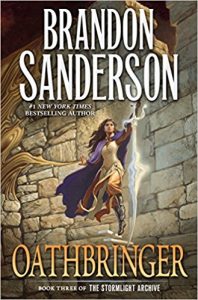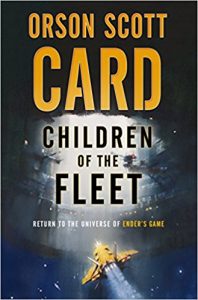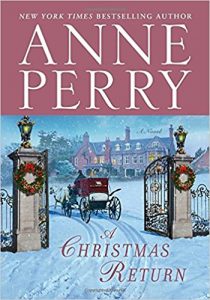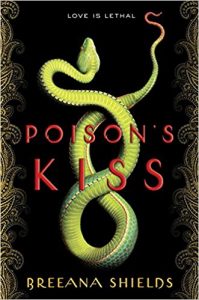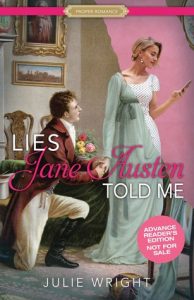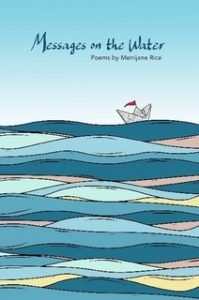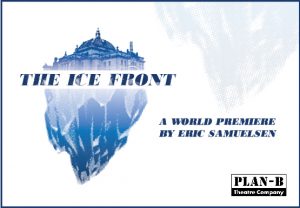Brandon Sanderson’s epic fantasy Oathbringer lands him a #1 position on the New York Times Hardcover Fiction list. The Ice Front, Eric Samuelsen’s latest and largest-cast play at Salt Lake City’s Plan-B, tells the story of the Norwegian National Theatre actors who were ordered to perform a Nazi propaganda drama. It received strong reviews. Instrument of War is a 90 minute film, directed by Adam Thomas Anderegg, about a WWII B-24 pilot who was captured and held as a POW in Germany. It played without interruption on BYUtv on Thanksgiving. There are a proliferation of interesting Mormon memoirs. Other novels published this month include Children of the Fleet, a new Enderverse novel by Orson Scott Card, Anne Perry’s Victorian Christmas mystery A Christmas Return, Breeana Shield’s debut young adult fantasy Poison’s Kiss, based on Indian folklore and Hindu beliefs, Julie Wright’s contemporary romance Lies Jane Austen Told Me, and Merrijane Rice’s poetry collection Messages on the Water. For suggestions and corrections, please write me at mormonlit AT gmail DOT com.
News, blogs, and awards
Bert Fuller gives a preview of his detailed review article, “Mormon Poetry, 2012 to the Present“, which will be published in a forthcoming issue of Dialogue, at Fire in the Pasture.
At A Motley Vision: Tyler Chadwick. “On the Problem and Promise of Alex Caldiero’s Sonosophy”, an excerpt of his recent PhD dissertation on the poet Alex Caldiero. Theric Jepson. “You’re Looking for a Book”, in which he recommends good Mormon literature. Wm Morris has “A conversation with Melissa Leilani Larson about Third Wheel and the writer’s life”.
Carolyn Homer “Mild Sacrilege To Celebrate Sanderson”, By Common Consent. Homer celebrates the release of Brandon Sanderson’s newest novel Oathbringer, and discusses the Mormonism found in Sanderson’s novels.
“Understanding Brandon Sanderson’s Cosmere”, by Martin Cahill. Tor.com.
Brandon Sanderson’s Oathbringer and Emily R. King’s The Hundredth Queen were among the 20 finalists in Amazon Best Science Fiction and Fantasy of 2017.
“Brandon Sanderson launches new generation of BYU authors.” BYU News. Features his former students Charlie Holmberg and Brian McClellan.
“BYU alumni give advice for aspiring authors.” BYU Universe. BYU alumni, including poet Jessica Goodfellow, children’s book author Esther Sumner, and speculative fiction author Dustin Steinacke speak about writing.
“A Comedy Show Thrives by Avoiding Vulgarities”. A Wall Street Journal article about Studio C, the BYUtv sketch comedy show.
Darci Stone has been announced as a winner in the Writers of the Future Contest, 34th year, 3rd quarter. Her story will be published in L. Ron Hubbard Presents Writers of the Future Volume 34. Darci graduated from Brigham Young University with a degree in Physics Teaching and a minor in Cultural Anthropology. Her story in Writers of the Future Volume 34 was strongly influenced by both her love of science and her love of world cultures. She is married to Nebula Award Winner Eric James Stone.
“The Problem in Writing Truth vs Fiction in Mormondom”, Exponent II. LDS authors Kathryn Ann Olsen and Sherrie Morreall Gavin discuss the kind of male, Mormon characters that Mormons often don’t admit exist in real life.
Mormon Arts Foundation’s Mormon Arts Retreat happened around Oct. 7-8. Julia de Azevedo-Hanks spoke about the paradoxical traits of creative people.
Orson Scott Card and Aaron Johnson won the 2017 Geffen Award from the Israeli Society for Science Fiction and Fantasy for Earth Afire and Earth Awakens, translated by Boaz Weiss.
Interview with Middle Grade novel author Elaine Vickers, by Ann Cannon, Salt Lake Tribune.
The Mormon News Report interviews Stephen Carter, the editor of Moth & Rust: Mormon Encounters With Death“, a collection of personal essays, short stories, poems, and a play.
Conferences
For 2018, the Association for Mormon Letters will not hold its own conference, but will instead join the conference of the Mormon Scholars in the Humanities, which will be held March 23-24 at Brigham Young University in Provo. The AML Awards will be presented at the dinner banquet, and AML-sponsored sessions will be held during the conference. The theme of the conference is “Humor”, so AML proposals should focus particularly on humor in Mormon literature. However, papers on other topics are also welcome. The deadline for proposals is January 5, 2018.
On January 20, 2018, the Mormon Arts Center in collaboration with the Tanner Humanities Center at the University of Utah will sponsor a conference for artists and teachers on teaching Mormon Arts. The purpose of the meeting is to confer on how best to teach Mormon Arts, either individual arts like fiction, musical composition, painting, poetry, film, dance, theater, design, architecture and so forth, or Mormon Arts as a whole. We are thinking of teaching in colleges and universities but the same principles apply to teaching at any level. The conference will be held at the Fort Douglas Officers Club, Salt Lake City.
Magazines and Short Fiction
The Fall 2017 issue of Dialogue: a journal of Mormon thought is now available. It includes the short stories “The Pew” by Alison Maeser Brimley and “Duties of a Deacon” by Theric Jepson, personal essays by Stephen Carter, Neil Longo, and Sariah Toronto, and poetry by Simon Peter Eggertsen, Theric Jepson, and Hugo Olaiz. Reviews of Melissa Leilani Larson’s Third Wheel by Julie Bowman, Matthew Babcock’s Heterodoxologies by Elizabeth Tidwell, and Judith Freeman’s Latter Days by Darin Stewart.
BYU Studies 56:3, 2017. Includes poetry by Scott Cameron, the essay “Constructively Broken,” by Sarah d’Evegnee, and reviews of Steven Peck’s Evolving Faith by Blake T. Ostler and Tom Rogers’ Let Your Hearts and Minds Expand, by Roger Terry.
David Farland. “Death Toll.” In the anthology Asylum Archives, edited by Jaron Briggs.
David Farland. “River of Stars.” In the anthology Submerged. Edited by S.C. Butler and Joshua Palmatier.
Nancy Fulda. “Planetbound” In Chasing Shadows: Visions of Our Coming Transparent World edited by Stephen W. Potts. Tor, Jan. 10.
Doug Gibson. “The Greatest Most Fabulous Christmas Tree Ornament in the World.” In The Best Worst Christmas Ever. Cardinal Rule Press, Nov. 8.
Mette Ivie Harrison. “A Mother’s Curse”. In The Usual Santas. Soho Crime, Oct. 24. A Linda Walheim story.
PW (Starred review): “Soho Crime draws from its impressive roster of authors for this outstanding Christmas-themed anthology.”
Library Journal: “The voices veer from darkly humorous (Helene Tursten and Mick Herron) to touching (Timothy Hallinan and Mette Ivie Harrison) to disturbing (Stuart Neville and Ed Lin), with tales set around the globe. ”
H. B. Moore. She has a story in Murder and Mayhem, a mystery box set, Carter & Bradley Publishing, Nov. 7. Hit USA Today #22 in mid-November.
Scott Parkin. “In the Heart of the Flesh”. In 3rd and Starlight. A Fantasy and Sci-Fi Anthology, edited by Robert B. Finegold. December.
Brad Torgersen. “45”. In MAGA 2020 and Beyond. Short story anthology. Superversive Press, Nov.
New books and their reviews
Orson Scott Card. Children of the Fleet. Tor, Oct. 10. Part of the Ender universe, about the “Battle School” or “Fleet School” soon after the events of Ender’s Game.
PW: “Card returns to the universe of his legendary Ender saga with a novel whose unresolved intrigues hold forth the enticing prospect of future elaborations. The Formic Wars that shaped the plots of earlier novels in the series and made Ender Wiggin their reluctant hero have ended, and Earth now looks to change the mission of its International Fleet from combat training to colonization of the stars. Ten-year-old Dabeet Ochoa, an intellectually precocious and insufferably arrogant “child of the Fleet” whose father is probably a high-ranking officer, is admitted as a student to Fleet School. Before he can attend, he’s kidnapped by desperate smugglers who threaten his mother’s life and force Dabeet to join their plot to compromise the Fleet School space station. Card builds a suspenseful mood of paranoia as Dabeet goes through his early days of training, uncertain whether the smugglers’ threat is sincere or just a ruse perpetrated by Fleet higher-ups to stimulate his skills at creative problem-solving. Card takes a risk by making his main character “an obnoxious little self-obsessed twit” (in Ender’s words), but the social skills that Dabeet gradually and grudgingly develops set up a thrilling climax in the best space opera tradition and lay the groundwork for future chronicles. Series fans will enjoy this installment.”
Tom Christofferson. That We May Be One: A Gay Mormon’s Perspective on Faith and Family. Deseret Book, October. Non-fiction/memoir. Interviews: KUER Radio West, A Thoughtful Faith, Mormon Matters, Mormon News Report.
Julie M. Smith, Times & Seasons. “The book is largely a memoir, with a few sections devoted to spiritual lessons that Tom has learned. The power of the latter sections is such that I hope that even people with minimal interest in LGBTQ issues would read the book. Tom’s journey back to the church is a fascinating one: it involved a ward who welcomed him—and his partner—with open arms. Tom argues against the idea that shunning is somehow necessary to remind gays of the commandments and points out that, when he was ready to return to full activity, he did not have to overcome the additional barriers of bitterness and pride that family or ward ostracism would have created . . . I hope that this book reaches a wide audience; it has the potential to actually move the conversation forwards on LGBTQ issues in the church. It is true that the prose is more workmanlike than transcendent (Christofferson is a businessman, not a professional writer), but this book is truly a gem.”
Gerald S. Argetsinger, Dialouge (forthcoming): “This is the book LGBTQ+ Mormons have been waiting for. It should be required reading for every LDS Church leader. Whether you know it or not, there are LGBTQ+ members in your congregations. Tom Christofferson has provided an example and a guidebook based on his family’s experiences coupled with scriptures and stories from their Mormon heritage. Together we can all experience the joy with which Tom proclaims, ‘I am a happy gay Mormon. By the power of the Holy Spirit, may the Lord bless you on your journey.’”
Richard Paul Evans. The Noel Diary. Simon & Schuster, Nov. 7. Christmas novel.
Library Journal: “There’s little holiday cheer for woebegone Jason Chercher, who’s confronting the death of his estranged mother even as his wife walks out the door. Sorting through his mother’s belongings, he learns that she fell into a deep depression in his early childhood and left his upbringing to a young, unwed mother named Noël, who lived with his family. Tracking down Noël as a means of understanding the past is the Christmas gift he gives himself, as Evans continues the holiday tradition he started almost single-handedly with The Christmas Box.”
Kari Ferguson. The OCD Mormon: Finding healing and hope in the midst of anxiety. Cedar Fort, September. Non-fiction.
Ashley Mae Hoiland, BCC. “Thanks to a recently acquired kindle and a lot of time nursing a newborn, I’ve read a lot of good books this summer, but none that I’ve recommended, referenced and been touched by more than Kari Ferguson’s new book, The OCD Mormon . . . I do not have OCD, or any mental illness for that matter, and many of the people I’ve recommended the book to don’t either, but that is precisely the power of her writing—this is a book we all need to read if we are going to claim to lift up the hands that hang . . . I simply had never thought about how difficult it is for someone with OCD to sit on a sacrament pew and think about the germs that must be there or that you might be spreading, or to take the sacrament when you worry about whose hands touched the bread and did they wash them and will you get someone sick if you accidentally touch a piece that isn’t the one you pick up? . . . The book is peppered with condensed boxes of Practical Tips and Tools if you have only time to flip through the pages. In reading over things again as I write this review, I find myself re-reading whole chapters, and re-committing myself to be more kind, understanding and gentle with everyone around me.”
Rebecca J. Greenwood. The Darkest Summer. Cedar Fort/Sweetwater, Nov. 14. Regency romance. Set in the stormy summer of 1816, this Regency romance is a retelling of the myth of Hades and Persephone. Debut novel.
Shannon Hale and Dean Hale. The Legend of Shadow High. Oct. Little Brown, Oct. 20. MG speculative/fairy tale. Ever After High series.
Kirkus: “Third-person, present-tense narration with asides in the form of footnotes makes the novice Narrator, Brooke Page, a character who breaks the fourth wall. Self-awareness abounds; puns, literal interpretations of figurative sayings, and the series’ trademark portmanteaus (“fangtastic,” “spelltacular”) fill the pages and may strike many as precious rather than cute. Moreover, overuse of the same jokes grows tiring (how many jokes can be made of the famous “Pease Porridge” rhyme?—five, apparently). This entry in the Monster High/Ever After High franchise may please fans, but it’s unlikely to win new ones.”
Michael Hicks. Do Clouds Rest? Dementiadventures with Mom. Self, September. Creative non-fiction.
Julie Nichols, AML: “A gently humorous record of the kinds of misspeaking and mishaps that beset those in cognitive decline . . . Dementiadventures is a set of fifty-seven numbered notes he kept on post-its, chronicling their conversations and his observations during these visits . . . Dementiadventures adds a local Utah (only peripherally LDS) ingredient to the mix, a more personal and intimate lens to the picture. If you know someone who’s been diagnosed with Alzheimer’s or who has another form of dementia associated with age or disease, these books and others like them may not help you feel less sad, but they will no doubt help you feel less alone.”
Keven Barney, BCC. “In this 111-page book there are 57 dementiadventures (each from one to three pages, some as short as a single paragraph), together with some additional material, such as her last diary entry, the obituary he wrote and the talk he gave at her funeral (which is simply beautiful; I’m glad Michael didn’t listen to Elder Packer’s dogma about funeral sermons) . . . The book is in turns funny and charming and sad, but mostly it’s just plain real as it recounts the small interactions between a mother and her only child in the final months of her life. Do yourself a favor and read this book.”
Michele Paige Holmes. A Promise for Tomorrow. Mirror, Nov. Scottish 1700s romance. Sequel.
Jennifer Jenkins. Fearless. Month9Books, Oct. 20. YA Fantasy. Fearless #3.
Jen Geigle Johnson. The Nobleman’s Daughter. Covenant, Nov. 1. Regency romance/political adventure. Two members of the British aristocracy secretly champion revolution with the London poor. Debut novel.
Bloggin’ ‘bout Books: B-. “I’ve been known to enjoy a fluffy Regency romance now and then, but I like them even better when they’ve got some substance behind them. The Nobleman’s Daughter offers up just that. Using England’s turn-of-the-century fight for equal rights as a backdrop, the author creates a tension-filled romance that keeps the reader enthralled as it winds down to its inevitable Happily Ever After. The story’s predictable; it’s also exciting, fun, and engrossing. Nothing overly original, but it’s enjoyable overall.”
Scott Livingston. My Broken Horse Christmas. Covenant, Nov. 7. Family Christmas novel, also a direct-to-DVD film, the same day, directed by John Lyde. “Each year, John anticipates the day when he will accompany his father on the search for the perfect horse to bring home to their farm. When this year’s frosty morning finally arrives, the pair eagerly sets out to find what is sure to be a wonderful addition to their stable. But when his father picks the meanest, wildest mare John has ever seen, the boy is baffled. Of all the horses his father could have selected, why choose such an imperfect one? As Christmas approaches a young boy learns lessons of faith, redemption, and the very real power of love as reflected by the Master of the season.”
Leann B. Larson. The Nephite Wife. Bonneville/Cedar Fort. The wife of Nephi, son of Helaman. Helaman 3 through 3 Nephi 1 Deseret News review.
Gerald N. Lund. Lieutenant Terry’s Christmas Fudge. Deseret Book, Oct. Short novel, based closely on a true story. “On a mission to bomb a French bridge and slow down Hitler’s army, U.S. bomber pilot Lt. Wendell B. Terry miraculously survived a harrowing parachute jump after his plane took a direct hit from enemy ground fire. Captured, Terry found himself in a German POW camp for Christmas. He shared an 18-by-24 foot cement room with 23 prisoners of war. He lived with a dirt floor, no heat to ward off the bitter cold, one small window, and not much to do except use his artistic ability to document his life in the camp in a journal he received from the Red Cross. Those illustrations, created by Lt. Terry during his incarceration, are reproduced in the book.”
Jennifer Moore, Krista Lynn Jensen, Anita Stansfield, Chalon Linton. Christmas Grace. Covenant, Oct. 1. Regency Christmas romance, four novellas.
Bloggin’ ‘bout Books: B-. “While I enjoyed some of the stories more than others (Jensen’ “Christmas at Canterwood” is my favorite), all four are filled with enough charm, hope, and love to warm even the coldest heart. Short and sweet, they make for light but uplifting reading that is especially well suited for the busy holiday season. A satisfying collection, this book would make a fun gift for anyone who enjoys clean, happy endings-guaranteed Regency love stories. If you are looking for a quick, Christmas-y read to get you into the holiday spirit, look no further. You’ve found it.”
Anthea Lawson, Jennifer Moore, Heather B. Moore. A Grand Tour. Mirror Press, Nov. 17. Victorian romance novellas.
Gregg Luke. The Hunter’s Son. Covenant, Nov. 2. Book of Mormon novel. A Nephite is captured in a murderous Lamanite raid, which kills the rest of his family. But when Chemish, Master Healer of the Lamanites, takes ownership of Jarem, the young man discovers unexpected kindness. Jarem becomes the healer’s apprentice, and soon Chemish finds his soul stirred by the Christian faith of his student. But even as the bond between the two unlikely friends grows, the hatred of the Lamanites spreads. It is no longer enough for them to own the Nephites—they want to exterminate every one of them, and even personal slaves are no longer safe.
Kimberley Montpetit. The Undercover Bridesmaid. Gelato Publishing, Oct. 13. Contemporary romance. FBI agents in love. Author is AKA Kimberley Griffiths Little.
Anne Perry. A Christmas Return. Ballentine, Nov. 7. Victorian Christmas mystery novellete. Her fifteenth Christmas novelette
Publishers Weekly (Starred): One day in December 1896, octogenarian Mariah Ellison, the sensitive, fully fleshed-out star of bestseller Perry’s exceptional 15th Christmas-themed mystery (after 2016’s A Christmas Message), receives an unusually heavy Christmas pudding at her house in London. Inside there’s a small cannonball. This odd gift reawakens painful memories of 20 years earlier, when Cullen Wesley, whom Mariah secretly loved, died under mysterious circumstances. Cullen was the lawyer defending Owen Durward, who was charged with the murder of 14-year-old Christina Abbott in Haslemere, Surrey. Before Owen’s trial, Cullen quit the case; hours later, he died when struck by an ornamental cannonball in a bizarre accident in his study. Owen was eventually acquitted of killing Christina. But now, according to the note from Cullen’s grandson Peter that arrives the same day as the pudding, Owen has returned to Haslemere, bent on regaining his reputation, and may be a threat to Cullen’s widow, Rowena. Peter believes Mariah is the only person who can save his grandfather’s good name, and Mariah decides to journey to Surrey to help. Perry unobtrusively incorporates insights about the true meaning of the season into the engrossing plot.
Merrijane Rice. Messages on the Water. Self, Oct. Poetry. 80 pages. A collection of poems written from one LDS woman’s perspective about her family, faith, nature, and the little gifts and insights that make life an experience of continual surprise, learning, and love.
Braden Bell: 5 stars. “Absolutely perfect. This spare, elegant volume absolutely sings. Rice is able to say so much with so few words. I am amazed that the deep images and feelings she can evoke in such a few carefully chosen words. These poems are modest in the sense that they are not showy or overly-clever. It made me think a little of a Japanese painting where the true mastery is found in being able to portray the essence of a thing in a a few carefully chosen strokes. For me, the sort of story, essay, or poem I like is where someone struggles honestly to find meaning or faith or to push through a trial and is then able to find peace or at least understanding. These poems struck me as being very familiar with the times when we want to believe or want to connect, but struggle. They often seem to portray the moment where a person is in their most difficult hour, the struggle that comes before resolution finally arrives. Rice balances this dynamic so beautifully, going full respect to the dark nights of the soul, but also clinging to hope that the clouds eventually part and sunshine comes, even if it is a bit pale. The poems are inspired by religious texts, but struck me more as being spiritual than religious. Certainly they can be enjoyed by religious people, but I believe there is great food for anyone’s soul, including those who are more spiritual than religious. All said, this is a masterful work by a skillful artist and technician, someone who is obviously well-acquainted with human struggle, yet who has learned to watch for the moments when grace and reassurance come.”
Scott Hales: “I don’t write many book reviews these days, but if I did I would review this collection of poems by a fantastic writer (and Mormon Lit Blitz winner). It is not getting nearly enough attention as it should. If you need a Christmas gift for someone who appreciates quality Mormon poetry, consider Merrijane Barton Rice’s Messages on the Water. Put differently, if you liked James Goldbergs Let Me Drown with Moses or Rachel Hunt Steenblik’s Mother’s Milk or anything in Tyler Chadwick’s Fire in the Pasture anthology, you would like this book.”
Brandon Sanderson. Oathbringer. Tor, Nov. 14. Stormlight Archive #3. Epic Fantasy.
AV Club, C+. “While Oathbringer is bigger than its predecessors, upping the word count to a whopping 1,220 pages of world-spanning conflict, it’s not actually better. The Way Of Kings spent most of its time introducing the world and characters, and the series seemed to have hit its stride in Words Of Radiance. Unfortunately Oathbringer shows that Sanderson’s story might not be powerful enough to last the 10 books the author has planned. That isn’t due to lack of ambition. While the action in the first two books of The Stormlight Archive was largely confined to two countries, the characters discovered a way to open portals across the world at the end of Words Of Radiance. The effect is similar to unlocking fast travel in a video game: suddenly the setting feels a lot larger . . . . The real problem is that Sanderson’s dedicated readers have seen this all before. All of his adult fantasy books are set in the same universe, and that’s become a problem. Any author is prone to have similar threads across novels and series, but by actually connecting his works he undermines his talent for crafting novel settings by making his conflicts not just similar but the same. The first trilogy in Sanderson’s Mistborn series also involved a group of magically empowered heroes trying to unite a devastated world against a terrible godlike being with a monstrous army—Odium’s cosmic cousin Ruin. The similarities weren’t as noticeable in the first two books of The Stormlight Archive where the characters were dealing mostly with the machinations of other humans, but as the power of the antagonists increase, so do the plot parallels . . . The weak points are frustrating since Sanderson still delivers plenty of thrills, with appropriately epic battles, complex plots, and dark mysteries to unravel. Sanderson has begun providing answers to some of the series’ mysteries, including explaining The Stormlight Archive’s cryptic opening scene, but he’s also introducing new ones . . . The book does have some surprises, with heroic deeds not always going as well as planned, and there’s a lot of great humor. Supporting characters do most of the heavy lifting so that the major ones can spend the majority of their time brooding about the weight of saving the world. They’ve got a long way to go. Sanderson needs to keep things fresh if their battle is going to be worth continuing.”
Geekly: “Oathbringer is impressive in what it accomplishes. Many of the questions left unanswered in the first two books about the past of Roshar are answered and establishes questions about its future. The reveals, both grand scale and personal to the characters, are jaw-dropping and have implications that will presumably affect the next seven novels of this series going forward. Sanderson continues on with the themes of classicism, slavery, and the aftermath of war from a new perspective than previous entries while exploring new ones such as addiction, substance abuse, religious heresy, and privilege. Well known for his magic systems and rules, Oathbringer continues the trend of balancing magic that has explicit rules the reader can understand while still giving the reader a sense of awe and wonder. It is unbelievable after the climaxes of The Way of Kings and Words of Radiance that Sanderson would be able to top those but Oathbringer’s turning point is rewarding to the reader of not only this one part of the series but the series as a whole so far.”
Brandon Sanderson, Rik Hoskin, and Julius Gopez. White Sand #2. Dynamite, Dec. 6. Graphic novel. “Following the loss of most of his colleagues in a violent ambush, Kenton has become Lord Mastrell of the few remaining Sand Masters, magicians who can manipulate sand to do their bidding. With the ruling council poised against him, the hot-headed Kenton must become a diplomat to have any hope of preventing the eradication of his people forever. However, there’s another complication: assassins are coming for him from all directions, and Kenton’s only true ally is Khriss, a visitor from the other side of the planet who has an agenda of her own to pursue.White Sand Volume 2 continues the New York Times bestselling series of graphic novels, bringing a crucial chapter of Brandon Sanderson’s Cosmere to life exclusively in a visual format.”
Breeana Shield. Poison’s Kiss. Random House Children’s, Jan. YA fantasy. Based on Indian folklore and Hindu beliefs. Debut novel.
Kirkus: “A girl raised as an assassin is sent after a cute boy in Sundari, an Indian-inflected fantasyland.Marinda is a visha kanya, a poison maiden. She was given to her handler, Gopal, as an infant and dosed with ever stronger snakebites until her kiss itself is toxic. She’s now 17, and Gopal regularly sends her out to kiss boys—on the orders of the Raja, he tells her—and though Marinda’s plagued with guilt, she has no choice. Her 7-year-old brother, Mani, has a painful disease, and Gopal has the only medicine that helps. When Gopal sends her after dreamboat Deven, whose eyes are “pools of melted chocolate,” Marinda’s torn between her unwillingness to hurt Deven and her need to protect Mani. She soon discovers her entire life is a lie and is left reeling, providing a solid setup for the B-movie climax. Decent plotting and romantic tension are strained by confusing worldbuilding. Indian food and creatures inspired by Hindu mythology provide Sundarian flavor: Marinda eats chapati and samosas; she fears the Raksaka and the Nagaraja. The technology level seems arbitrary; characters wear hiking boots and live in modern row houses with showers, but the Raja’s palace is lit by torches, and his soldiers are armed with swords and spears. Avoid this curry-house fantasy and try Chitra Banerjee Divakaruni’s The Conch Bearer or Roshani Chokshi’s The Star-Touched Queen (2016) instead”
Bulletin of the Center for Children’s Books. “The pace is steady until the first plot twist (a doozy), and the subsequent speedy unraveling of every aspect of Marinda’s life will likely leave readers as floored and shocked as it does Marinda. The romance between Marinda and Deven, her would-be victim, is sweet, but this is really a story about Marinda’s unbreakable bond with Mani and the desperate measures she’ll take to protect him. An author’s note discusses the Indian folklore and Hindu beliefs that inspired the story.”
SLJ: “With a rich tapestry of characters ranging from Kadru, a poison mistress, to Raja himself, Shields’s first installment in a fantasy duology is intriguing if a little slow-paced. The author’s easy co-optation of Indian and other cultural mythology, though, raises questions for discussion. The text is liberally peppered with Sanskrit, but there is no glossary for context, only an afterword, in which the author writes that “Sundari is not India, it is influenced by that culture and its mythology.” Shields reimagines Garuda, “a birdlike creature,” as female and also mixes in Egyptian mythology (“If the heart is as light as a feather, the person can enter the afterlife. If not, the heart is fed to a beast.”). VERDICT The novel is moderately entertaining, but those seeking tighter pacing and more authentic storytelling based on Indian mythology should try Roshani Chokshi’sThe Star-Touched Queen.”
Anita Stansfield. Love and Loss at Whitmore Manor. Covenant, Nov. 1. Regency romance.
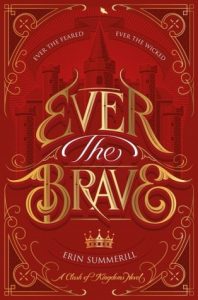 Erin Summerill. Ever the Brave. HMH books, Dec. 5. YA fantasy. Clash of the Kingdoms #2.
Erin Summerill. Ever the Brave. HMH books, Dec. 5. YA fantasy. Clash of the Kingdoms #2.
SJL: The second volume in the series, this fantasy quest delivers both in character development and world-building. After saving the king’s life at the conclusion of Ever the Hunted, Britta finds herself linked to the king, aware of his presence and his well-being even as her relationship with Cohen grows. Meanwhile, young Channelers are being kidnapped in Shaerdan, and Cohen fears for Britta’s safety, knowing nothing of her special connection with the king. This sequel continues the character development and measured pace of the first installment, and is interspersed with tense action sequences throughout. Additional exposition rounds out the universe described in the first book, while dialogue adds dimension to each of the characters. Three distinct narrators keep readers wondering what will happen next. Intense action scenes create a compelling pace at times, balanced with the slower speed in sections of the narrative. This book is one that is easy to pick up and difficult to put down. Give to fans of Kristin Cashore’s “Graceling” trilogy and E.K. Johnston’s A Thousand Nights. VERDICT A must-purchase where the first volume is popular.
Kirkus: “Nearly the first half of the book is slow-paced, a bloated slog to a genuinely surprising chain of betrayals that kicks off the plot in earnest. From the frequently unfocused first act even through the action-heavy back end, it frequently struggles with creating enough tension, especially through unclear motivations. While most characters are white, dark-skinned individuals are occasionally—Lirra is one—mentioned, and race appears to have no significance in the fantasy world. A forgettable sequel.”
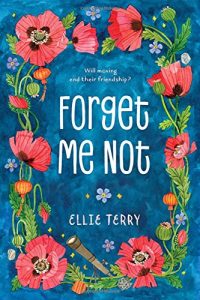 Ellie Terry. Forget Me Not. Feiwel & Friends, March 14. MG verse novel. Debut novel. “Calliope June has Tourette syndrome. Sometimes she can’t control the noises that come out of her mouth, or even her body language. When she and her mother move yet again, she tries to hide her TS. But soon the kids in her class realize she’s different. Only her neighbor, who is also the class president, sees her as she truly is—a quirky kid, and a good friend. But is he brave enough to take their friendship public?”
Ellie Terry. Forget Me Not. Feiwel & Friends, March 14. MG verse novel. Debut novel. “Calliope June has Tourette syndrome. Sometimes she can’t control the noises that come out of her mouth, or even her body language. When she and her mother move yet again, she tries to hide her TS. But soon the kids in her class realize she’s different. Only her neighbor, who is also the class president, sees her as she truly is—a quirky kid, and a good friend. But is he brave enough to take their friendship public?”
PW: “Terry’s debut novel thoughtfully traces the fragile emotions of two seventh graders: Calliope, a girl painfully self-conscious about having Tourette syndrome, and Jinsong, a popular boy she meets in her new town. Calliope is tired of moving every time her mother “breaks up/ with one of her crazy boyfriends.” Having just settled in St. George, Utah, she’s glad to make friends with Jinsong, who lives in her apartment complex. But Jinsong begins distancing himself from Calliope when her uncontrollable impulses become more prominent and she becomes the target of cruel jokes at school. “Sometimes my tics/ are like gentle whispers,/ asking me to do things,/ to say things…. But other times they’re like a/ SHOUT!/ Jumping out so loud and strong/ I could never hope to/ stop them,” she explains. Meanwhile, Jinsong is torn between standing up for Calliope and preserving his status. Terry, who has Tourette syndrome herself, offers enormous insight into an often-misunderstood condition, writing in verse for Calliope’s chapters and prose for Jinsong’s. Her poetic explorations of Calliope’s anxiety and Jinsong’s moral struggles are honest and moving. ”
SLJ: “Written in a patchwork of prose poetry and free verse, Terry’s narrative deftly represents the reality of TS in its fullness. It works to deconstruct common misconceptions, such as that those who have TS have a propensity to swear, and sheds light on the raw confusion and the frightening nature of a physical experience that is utterly unpredictable . . . This exploration of Calli’s neurological disorder and her struggle to find her place will stay in the hearts and minds of readers for a long time; a good addition for most collections.”
VOYA: “The novel’s dual narrative offers differing perspectives on the experience of Tourette syndrome, both in Callie’s verse, which is driven by genuine descriptions of uncontrollable impulse, and Jinsong’s frustration-filled prose. However, Jinsong’s efforts to defend and protect Calli feel somewhat truncated and predictable. Calli’s final act of generosity toward Beatriz, one of her tormentors—offering her the gift of forgiveness, symbolized by a laminated poppy flower—appears both neat and unconvincing. Though the book has some flaws, the tale ends with the emphasis on character that is the driving force of the entire story. Terry, who has Tourette syndrome, provides perceptive insights into an oft-misunderstood disorder through Callie’s voice, making Forget Me Not a character-driven success. This is a recommended purchase, particularly for school librarians who can benefit from the teachable elements of both empathy and poetic form.“
Bloggin’ ‘bout Books: B. “Although Forget Me Not is lighthearted overall, the fears and insecurities of both narrators come across loud and clear. Because Ellie Terry has TS, Calli’s perspective rings especially true. Without feeling heavy-handed, Forget Me Not illustrates the importance of acceptance, the power of empathy, and the joy that can be found in even the most likely of friendships. Authentic and uplifting, this quick, enjoyable read will resonate with anyone who’s ever felt out of place. And, really, isn’t that all of us?”
Charity Tillemann-Dick. The Encore: A Memoir in Three Acts. Atria Books, October. Memoir. Feature articles: Washington Post, CNN, Deseret News, NPR Weekend Edition.
Publishers Weekly: “In this inspiring memoir about faith, music, love, and illness, soprano Tillemann-Dick recounts the challenges of living with a disease that compromises her lungs even as she performs on the world stage as a top-selling Billboard classical artist. In 2004, 21-year-old Tillemann-Dick was diagnosed with pulmonary hypertension, a devastating disease that, in the absence of a lung transplant, kills nearly 70% of patients within the first five years of diagnosis. Tillemann-Dick transforms her experience into a moving opera. The emergency room becomes an ‘avant-garde production’ of Lucia di Lammermoor with its ‘chorus of beeps and buzzers, all underscored by the percussive expletives of the drunkard on the other side of the curtain.’ Amid the ‘horrific, minimalist score’ of the ICU, Tillemann-Dick recovered from a double lung transplant, fighting to regain her voice and her independence. That first lung transplant failed, and she had her second transplant three years later. Nevertheless, she continued to live her dream life, singing with her transplanted lungs. She notes early on, ‘I’m not afraid of death. I’m afraid of not living the life I’m meant to live.’ This is a moving memoir, and in it Tillemann-Dick shares her life of wonder, opera, and love.”
Kirkus: “Even though there are a lot of characters, they are all sufficiently fleshed out. Tillemann-Dick ably shows the grueling process of trying to get healthy, keeping the tone upbeat while effectively demonstrating the gravity of the situation. As she was healing, she fell in love; while her relationship was far from perfect, it was enduring and necessary to her recovery. As the narrative ends, readers see that the author has achieved the kind of greatness she was seeking: ‘I’ve fallen in love, I’ve gotten very sick, and I’ve worked more than I ever knew was possible … Even the great divas die. But like a timeless melody, true greatness never does.’”
Daniel O, Millennial Star. “One might expect the recipient of two lung transplants to be depressed or pessimistic. But Charity’s deep faith and incredible optimism are what will stick with you long after the book finishes. Throughout her long ordeal, Charity never relinquishes her deeply rooted testimony that there is a loving Heavenly Father and that he is in charge of her life’s direction. For a book written for a secular and primarily non-LDS audience, this book is also remarkably full of Charity’s testimony of the restored gospel. Throughout the book, Charity intersperses moving prayers to her heavenly father, and her belief in the eternal nature of her family. She does this in a wholly natural fashion . . . And her various travails as she prepared for her wedding hit close to home and was hilarious. You will find yourself laughing far more than you expected.”
Diane Stringam Tolley. A House Divided. Cedar Fort/ Bonneville, Nov. 16. Book of Mormon novel. Sequel to Daughter of Ishmael. Hannah, Lemuel’s wife, tries to stay true to her faith in the face of her family splintering in the new world.
Jeff Wheeler. The Foresaken Throne. 47 North/Amazon, Nov. 15. Epic Fantasy. The Kingfountain series #6.
Julie Wright. Lies Jane Austen Told Me. Shadow Mountain, Nov. 7. Contemporary romance. Ever since Emma read Pride and Prejudice, she’s been in love with Mr. Darcy and has regarded Jane Austen as the expert on all things romantic. So naturally when Emma falls for Blake Hampton and he invites her home to meet his parents, she is positive an engagement is in her future.
PW: “Wright does contemporary romance right in this diverting novel that takes the famous words of the queen mother of romance novels and throws them back in her face. L.A. marketing executive Emma Pierce has read every Jane Austen book cover to cover, but has failed to find her perfect Mr. Darcy. When she catches soon-to-be-ex Blake grilling fish (not a euphemism) with another woman, she gives up on following Austen’s advice or seeking romantic companionship, and decides to instead take this opportunity to reexamine and recalculate her priorities. That lasts only as long as it takes her to meet Blake’s brother, Lucas. Even as she falls in love with him, she can’t get past one incongruity in his otherwise spotless behavior. As for Lucas, he’s holding back in deference to Blake’s sincere regret for hurting Emma, whom he claims to still love. True love manages to surmount these hurdles in this enjoyable story with just enough heft.”
SLJ: “Wright’s latest is a cute play on the world of Jane Austen and those who love her. The romance is sweet as sugar and takes a while to resolve, allowing for a bit of will she or won’t she (or he, for that matter). Despite a minor gaffe in the spelling of “Bennet” (which this reviewer has been assured will be corrected for the next printing), this title is recommended where gentle romances have pride of place”
Reviews of older books
D. J. Butler. Witchy Eye (Wm Morris) 5 stars. “Butler conjures up a compelling, rich world ripe with poetics and myth and compelling, unique characters. I found the pacing spot on, but it may be a wee bit slow for core genre readers and a wee bit adventurey for core lit-fic readers. What I like best is that the politics and theologies and economies are many. It’s not just a matter of not being good against bad–there are clearly some bad characters and some good characters and some gray characters–but rather that things are complicated and histories exist and priorities–good and bad and neutral–so often conflict.”
Mette Harrison. The Book of Laman (David Evans, Times and Seasons). “Despite a few frustrations, I find myself reflecting on Harrison’s Laman, even now, weeks after the finishing the book. I can’t get him out of my head. And for that, I thank Ms. Harrison. In her wonderful afterword, Harrison admits, ‘I’m still clinging on to faith by the skin of my teeth most of the time.’ But, just as with her Laman, ‘there are bursts of brilliance that strike me now and again and convince me that there’s value in the struggle.’ Truly.”
Marita Dachsel. Glossolalia (Theric Jepson). “Here’s the concept: Joseph Smith had a lot of wives. Let them each have their say. Most of these poems fit into the one-dramatic-monologue-per-wife plan, but a few have a collective voice or are about a place; Emma gets multiple poems. As a concept it’s good enough, but it’s a lot of poems and not really enough ideas to sustain the volume. It was hard to get through.”
Drama
 Eric Samuelsen. The Ice Front. Nov. 9-19, Plan-B Theater, Jerry Rapier directing. Set during World War II, it’s the story of what happens when Norwegian National Theatre actors are ordered to perform a Nazi propaganda drama. The play raises questions “about what it means to be an artist, to be a patriot, to be human.”
Eric Samuelsen. The Ice Front. Nov. 9-19, Plan-B Theater, Jerry Rapier directing. Set during World War II, it’s the story of what happens when Norwegian National Theatre actors are ordered to perform a Nazi propaganda drama. The play raises questions “about what it means to be an artist, to be a patriot, to be human.”
SL Tribune. “Eric Samuelsen’s profound and powerful play is set at the height of World War II in Nazi-occupied Norway . . . The play’s story is true, but Samuelsen created the characters, a vivid cross-section of Norwegian theatrical society.”
Scott Renshaw, City Weekly. “The Ice Front keeps its concept entertaining as the company members come up with increasingly elaborate ways of hindering their own show—intentionally breaking one actor’s foot, or faking a pregnancy—while evoking a mix of The Producers and Inglourious Basterds. It is, however, clearly a story of conscience, including the things we can try to convince ourselves so that we don’t feel obliged to take action. At the risk of Godwin’s Law-ing the notion of fighting against power in 2017 America, The Ice Front confronts the moments when every instinct you have tells you that doing nothing just isn’t good enough any more.”
Salt Lake Magazine: “The Ice Front is essentially a formal parlor play firmly in the tradition of Norwegian playwright Henrik Ibsen, a name that is dropped often during the two-hour production. The heart is the grand debate among the players as their options dwindle, desperation galvanizes the group and divisions in the face of a common enemy fall away. It’s a big cast and they each have a lot of heavy lifting to do. There are no standouts in this production. It’s a thorough team effort for one of the largest casts I’ve seen on Plan-B’s stage. It’s not perfect. At times, its pedantic and tedious. At several points late in the play, an old argument would resurface and I’d think “umm I thought y’all had decided this already.” Despite these bumps, I was nevertheless engaged by the material, which viewed through the lens of life in Trump’s America is chilling.”
Les Roka, The Utah Arts Review. “Samuelsen’s The Ice Front compels us to learn from the experience of ordinary Norwegians and to be clear minded, keen and vigilant as ever. We should interrogate our own narratives along with our command and understanding of historical facts against the expressions of intolerance, hatred, discrimination and bigotry that always are the most accurate warning signs in history. In writing The Ice Front, Samuelsen meticulously has cross-examined his own narratives and facts, which came from the wartime experiences of his family, his research for his dissertation on Norwegian theater and his own lifetime work with the inner workings and culture of the theatrical world. He infuses the play with historical accuracy and integrity but never allows it to overwhelm the essential emotional tensions of drama that maximize the value of a three-dimensional understanding of human conscience and the choices we face. He strikes a solid, credible balance for the right thematic purpose. It is Samuelsen’s never-wavering ring of authenticity that drives the momentum of The Ice Front, which features the largest cast ever (nine actors) and among the longest plays in Plan-B’s 27-year history. The opening night performance already was taut and crisp in its pacing.”
Javen Tanner. This Bird of Dawning. The Sting & Honey Company, Eccles Theater, SLC, Dec. 15-16. Sting & Honey’s annual Nativity. The Christmas Story told through Poetry, Mask, and Movement.
The BYU Department of Theatre and Media Arts’ Microburst Festival, directed by George Nelson, will be performing Nov. 30 – Dec. 2, in the Nelke theatre. Audience members will have the opportunity to see the award-winning play, “Game Four,” by Brittni Henrietty, which won the 2017 regional KCACTF 10-minute play contest and was a finalist for the national playwriting award. Playwrights (which were all students at the time the plays were written) and plays include: Rylee Witbeck (“Untapped”), Alyssa Aramaki (“London”), Brittni Henrietty (“A Night In,” “Game Four”), Jessica Holcomb (“Elephant Partially In the Room”), and Chelsea Mortensen (“Happy Holiday”).
Carleton Bluford. The Priesthood. Plan-B Script-in-hand reading, Nov. 15. “How do we choose to find ourselves? The LDS Church’s 1978 decision to ordain black men to the priesthood sends two young friends on a surprising and unexpected journey of personal revelation.”
Omar Hansen. Ballad of a Meadow. Salt Lake City Fringe Festival, July 2017. One-man show about the Mountain Meadows Massacre.
Sara Claveire, UTBA: “A deeply moving story of a man who was a part of the Mountain Meadows Massacre in Utah on September 11, 1857. It was a much different style of show than many of the other shows at the Fringe, which was a nice contrast. Hansen’s show was even more interesting with his original songs he played on the guitar . . . Hansen’s presentation was solid: he had great focus, spoke clearly and loudly, and shared a depth of emotion that surprised me so much I joined in tears when he finally shared the harsh details of his part in the massacre. It was powerfully captivating and a great history lesson. The music was simple country sounding, and made me want to go discover new frontiers too. I especially enjoyed the song ending with, “Where the Wind Does Blow,” which was fun and upbeat. I left with his opening and closing song, “Take Me Home” pleasantly stuck in my head. Yet, the beginning of Ballad of a Meadow seemed a little scattered, and while performing “I’m an Old Man” he stopped singing but kept playing like he was trying to remember the words to the song, although that could have been his character choice, considering the song . . . I really enjoyed this performance and appreciated the history lesson. It made me ask myself what murder can do to someone, how it affects their life and soul, not matter what the circumstances were surrounding that act. If Hansen had made it a little more action-packed and took out some of the unnecessary historical facts, I think Ballad of a Meadow would be just right.”
Lori Prescott Hansen. Becoming an Honorary Crone. Salt Lake City Fringe Festival, July 2017. One-woman storytelling play.
Sara Claverie, UTBA. “A collection of stories about a woman’s life growing further into adulthood. Hansen begins by asking the audience, “Do you believe in fate?” and shares some history about the three fates from Greek mythology. She muses on what makes a woman valuable to herself and how can she lead girls younger than her into that strong future. The first portion of her show was hard to follow at times, but once she started the fairy tale I was engrossed. Hansen strung along a line of her own experiences that were amusing and interesting, but I wasn’t sure where she was going with it at first, or how all her experiences working at Smiths were all pointing to the theme of her performance. She finally talks about her mom and comes full circle with a powerful ending, which was profoundly moving and satisfying. Her experience with her mother was a priceless story for me—and perhaps for any daughter or mother—to hear. While most of the shows I’ve seen at the Fringe have been risque, this show is definitely “squeaky-clean” as they say on the Fringe site. I recommend this especially for women, primarily because of the pressures on women to be outwardly beautiful all the time and how Hansen addressed these issues. The show is the longest I’ve seen at the Fringe, just under an hour yet still engaging, even with Hansen jumping from one story to the next. If you get the chance to see this, I recommend to follow the advice Hansen gives in one of her stories, “I’ve learned that when somebody says, ‘let me tell you a story,’ that is a really good time to listen.””
New Works Ten Utah New Works Theatre Project Mercury Theater and Event Center, Provo, November 15–18. Features short plays by the likes of Eric Samuelsen (“Cassandra”), Tucker T Dansie, Scott M. Stringham and Heather Stringham, Kathy Reynolds, Bryan Stubbles, Søren Paul Budge, Cody Cutler, Page Petrucka, Spicer Carr, Ken Agle, etc. 10 full productions and 7 staged readings.
Film
Instrument of War. Adam Thomas Anderegg, director. Russ Kendall, producer. Matt Whitaker, writer. BYUtv, November. 90 minutes made-for-tv film, based on a true story, about a WWII B-24 pilot, captured and held as a POW in Germany. Kaleidescope Productions. Feature stories: Derick Clements, Daily Herald. Sarah Harris, Deseret News.
The Stray, a film written and directed by Mitch Davis (The Other Side of Heaven), opened Oct. 6, nationwide. 640 theaters its first week. Box office gross of $1,573,058 after seven weeks.
A Promise of the Heart. Written and directed by Jorge Ramirez Rivera. Excel, direct to DVD, Aug. 2017. A group of Mormon friends meet up at their ten-year high school reunion, recounting the tragic story of unrequited love between them. In a dramatic awakening fueled by dreams and nostalgia, one of them makes a life-changing realization about friendship, love, and commitment.
My Broken Horse Christmas. Directed by John Lyde and Brian Brough. Covenant, Nov. 7. Direct-to-DVD. Also a novel, by Scott Livingstone, published the same day by Covenant.
BYU Department of Theatre and Media Arts’ Final Cut Film Festival, an annual showcase of student-made films, was held in October. Awards given at the festival included: Special Judges Cinematography Award: The Waiting Room. Colby Barrios, Alex Hafield, Spenser Clark. Best Fiction and Audience Favorite: I Love My Robot Boyfriend! Director: Sariah May, Producer: Elise Moulton. Best Non-Fiction: Pyramid Dreams. Director: Emma Meurs, Producer: McKinley Haas.
The Rocky Mountain Regional Emmys were announced on October 14. BYU Broadcasting, garnered nine regional Emmys. Beehive Stories: Canyonlands, directed by Brad Barber, and submitted by KBYU, won in the Craft Specialty Musical Composition category. Click here for a complete list of these awards. A winner in the Student Production, Long Form: Fiction/Non-Fiction category was No Walk in the Park, directed by Peter Walton, produced by Alexis Romero.
Bestsellers
Oct. 22, 29, Nov. 5, 12, 19, 26, Dec. 3
Brandon Sanderson. Oathbringer
PW Hardcover: x, x, x, x, x, x, #1 (1 week). 58,086 units
USA Today: x, x, x, x, x, x, #3 (1 week)
NYT Hardcover: x, x, x, x, x, x, #1 (1 week)
NYT Combined Print and E-book: x, x, x, x, x, x, #2 (1 week)
Brandon Sanderson. Edgedancer
USA Today: x, x, #36, x, x, x (1 week)
PW Hardcover: x, x, #18, x, x, x (1 week). 4510 units.
Richard Paul Evans. The Noel Diary
USA Today: x, x, x, x, x, x, #24, #74 (2 weeks)
PW Hardcover: x, x, x, x, x, x, #5, #11 (2 weeks). 16,627, 9065 units. 25,692 total
NYT Hardcover: x, x, x, x, x, x, #9, #15 (2 weeks)
NYT Combined Print & E-book: x, x, x, x, x, x, #10, x (1 week)
Richard Paul Evans. Michael Vey #7: The Final Spark
PW Children’s: #16, x, x, x, x, x, x, x (4 weeks). 3360 units. 37,541 total
NYT Children’s Series: x, x, #2, #8, #9, x, x (12 weeks)
Christine Feehan. Leopard’s Blood
USA Today: x, x, x, #5, #33, #94, x (3 weeks)
PW Mass Market: x, x, x, #1, #2, #14, #19 (4 weeks). 18,927, 12,277, 6819, 4920 units. 42,943 total.
NYT Combined Print & E-book: x, x, x, x, #5, #11, x (2 weeks)
RaeAnne Thayne. Sugar Pine Trail
USA Today: #49, #80, #113, x, x, x (4 weeks)
PW Mass Market Paperback: #4, #5, #9, x, x, x (4 weeks). 11,967, 8230, 6874 units. 43,463 total.
NYT Combined Print & Ebook: x, x, x, x, #8, x, x (1 week)
RaeAnne Thayne. The Rancher’s Christmas Song
USA Today: x, x, #43, x, x, x, x (1 week)
PW Mass Market Paperback: x, x, #12, x, x, #24, x (3 weeks). 6094 units. 8468 total. 5110, 4041 units, 14,049 total (different edition)
RaeAnne Thayne. Snowbound in Sweetwater Ranch
USA Today: x, x, x, #66, x, x, x (1 week)
Brenda Novak. Until You Loved Me
USA Today: #36, x, x, x, x, x, x (2 weeks)
Brenda Novak. Right Where We Belong
USA Today: x, x, x, x, #35, x, x (1 week)
PW Mass Market: x, x, x, x, #20, x, x (1 week). 5892 units.
Brenda Novak et al. On A Snowy Christmas
PW Mass Market Paperback: #21, x, x, x, x, x, x (2 weeks). 4712 units. 8668 total.
Stephenie Meyer. The Chemist
USA Today: x, x, x, #97, x, x, x (22 weeks)
Orson Scott Card. Children of the Fleet
USA Today: x, #140, x, x, x, x (1 week)
Heather Moore and others. Murder and Mayhem
USA Today: x, x, x, x, x, #22, x (1 week)

